Computex 2005 Early Bird Coverage: NVIDIA's G70, Athlon 64 BTX and more
by Anand Lal Shimpi on May 30, 2005 8:53 AM EST- Posted in
- Trade Shows
Tomorrow is the official start of this year's Computex, but as always we were able to get a sneak peak at the show before the floor actually opened.
With the show a day away from starting, we've already seen the first AMD BTX motherboard, a number of NVIDIA G70 graphics cards, an Intel motherboard that can be switched to an Socket-939 board by just purchasing a single card and the first hints of ATI's new multi-GPU chipset.
All of that and more in today's pre-show coverage.

BTX Athlon 64 Motherboard
Intel's BTX standard continues to be fairly unsupported by the motherboard manufacturers we've met with. The motherboard and case manufacturers that we've met with have told us that by the end of this year BTX shipments will account for under 10% of their overall production. By the end of 2006, that figure is expected to rise to anywhere between 15 - 30%. If you're worried about the transition to BTX, you probably won't be forced to migrate until 2007 - 2008.
One concern we have all voiced is the lack of AMD motherboard designs for the BTX specification. Originally we worried that routing would be an issue thanks to the Athlon 64's on-die memory controller, but MSI put our fears to rest by bringing us the first Socket-939 BTX motherboard we've ever seen:
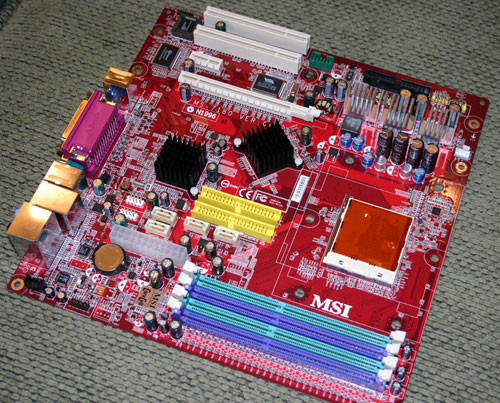
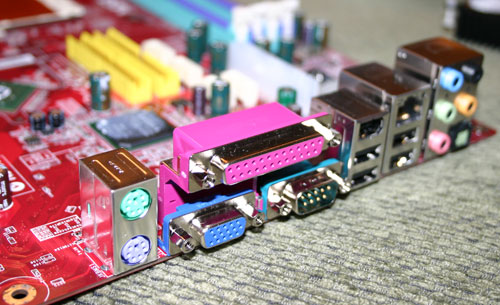
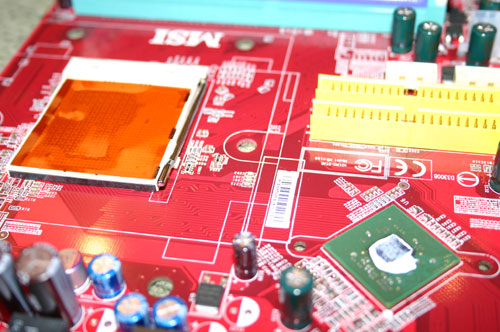
This particular board is based on NVIDIA's C51G integrated graphics chipset and adheres to the microBTX standard.
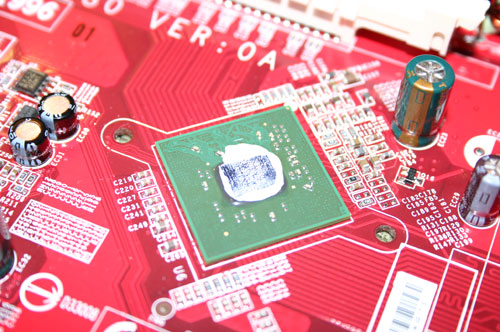
NVIDIA's C51G chipset - nForce4 + Integrated Graphics
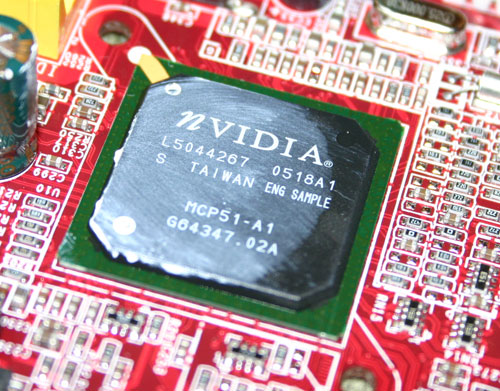
NVIDIA's C51G South Bridge, identical to what is on the nForce4 SLI Intel Edition
The board is due out for release by the end of this year, but it will be an OEM-only solution. MSI is demonstrating a total of two BTX motherboards at the show this year, which is a big increase from last year but in-line with the slow adoption rate we've seen for BTX.
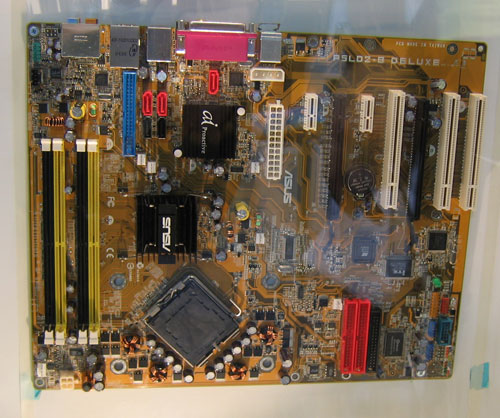
ASUS also had a few BTX motherboards at the show
The move to BTX is an expensive one for case manufacturers; the high costs of re-tooling and producing cases based on a new form factor have kept case manufacturers from embracing the new standard, especially given that ATX seems to be fulfilling users' needs just fine. The case manufacturers won't put much time and money behind BTX without widespread BTX motherboard availability, and motherboard manufacturers won't build BTX boards without widespread case availability. Like many new technologies in the PC industry, BTX presents both manufacturers with the classic chicken and egg scenario.










80 Comments
View All Comments
dmctaggart - Thursday, July 14, 2005 - link
BTW where is the $50 ram card?Anandtech says:
Prices
Newegg.com $88.00
Amazon Marketplace $91.54
Monarch Computer Systems $87.00
dmctaggart - Thursday, July 14, 2005 - link
Since when do you need hardware to have a ramdrive?Hookup a ups to a ram drive? Why not just hook it up to your computer if you don't want to lose the ramdrive?
Buy the slowest ram you can for your hardware swap drive?
Why not have a ramdrive using the fast ram you have installed on your computer and aim your swapdrive at it?
I think everyone has gone buggy.
Danno
flloyd - Thursday, June 2, 2005 - link
Accroding to this article, the PCI slot powers it up while the computer is off and therefore the battery is only for when it is unplugged or during a power outage.http://www.infoworld.com/article/05/06/01/HNxpwind...
drag0n - Thursday, June 2, 2005 - link
how about this:1-set your PC to boot off SATA first as in:
no OS goto harddrive
OS goto SATA ramdisk
2-mirror your xp install to your 4G ramdisk
3-reboot
4-configured for ALL OS functions running off the SATA ramdisk (including swapfile, temps, etc.)
5-never leave your PC off for more than 16 hrs.
*grin*
MrHaze - Thursday, June 2, 2005 - link
I'd really like to run the Gigabyte ramdisk for my pagefile.The key factor would be finding slow (cheap) RAM.
My thoughts on more system memory vs. ramdisk:
Yeah, more system memory is obviously better. But with system memory you're trying to milk every bit of speed you can--and that's expensive. Most folks top out around 2gb or even 1gb. 4Gb is troublesome.
It seems that a cheap 2-4 gb ramdisk for the pagefile would be an excellent addition to 2Gb of system memory.
Question:
Why don't DIMM manufacturers make something like this? Seems like they could build a big PCB with 4+ gb of appropriate and cheap RAM chips (instead of whole DDR DIMMS designed for a completely different application). One big-ass memory module. Wouldn't this be a more elegant and cost-effective solution?
Mr. Hayes
myne1 - Wednesday, June 1, 2005 - link
Actually, nevermind my last comment.This is an absolutely awesome way of doing it.
Gigabyte; please pat your engineers on the back.
Any word on eta/avaliability?
I want one now! Now as in yesterday :D
myne1 - Wednesday, June 1, 2005 - link
WOW!2 months ago I posted my ideas about a PCI-E based RAM card on OCAU and a couple of other forums. I even emailed a couple of big-name companies, but not gigabyte. My mistake it seems :/
(link to my post : http://forums.overclockers.com.au/showthread.php?t...
The concept drawing is crude, but I still hope that someone makes it. Even in 1x mode it'll have nearly 4x the bi-directional bandwith of PCI.
http://www.users.on.net/~jvizard/myne/RAMcard.JPG
Gigabyte, if you're reading this, pretty please :)
EODetroit - Wednesday, June 1, 2005 - link
Because you can buy cheap ram for the board, and it won't hurt performance. The limiting factor will be the sata connection, not the ram speed.Whereas there's problems with 4GB of system memory, such as many OS' not liking that much, many motherboards not supporting that much, and if you want to run at DDR400 you're going to have to buy expensive ram.
Also some of that system memory would have to go towards the system and not the ram disk... in the end you'll probably max out at a 3GB ram disk or so. And finally with the add-in boards you could raid two of them together to create ram disks > 4GB in size, which would otherwise be impossible since no ram disk software seems to support sizes over 4GB, at least on Windows.
oupei - Wednesday, June 1, 2005 - link
If you're willing to buy 4gb of ram to put on the ramdrive, why not just put it on the mobo and just have 4gb of ram?unless you want it for startup, i don't see why anyone would want it.
justly - Tuesday, May 31, 2005 - link
Also, thanks for the URL. I haven't read it yet (SFF is not a priority for me) but I will make sure to read it. thanks again.